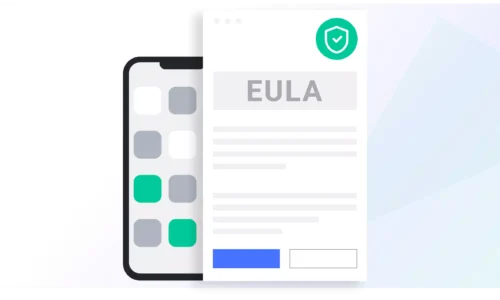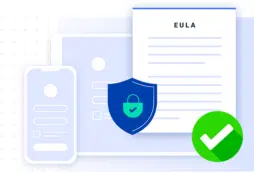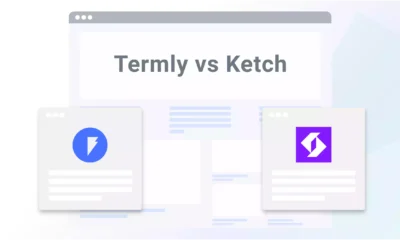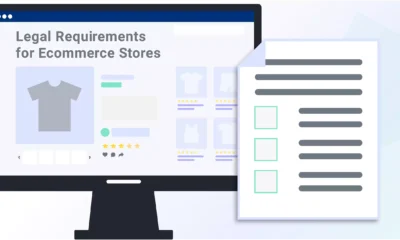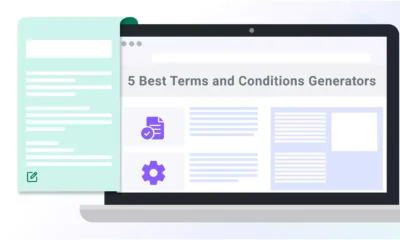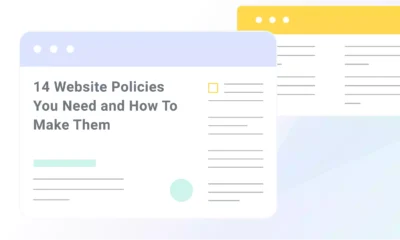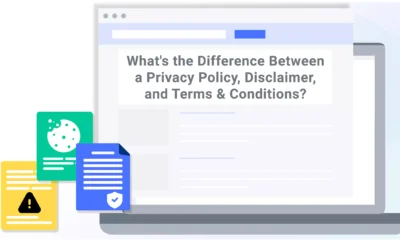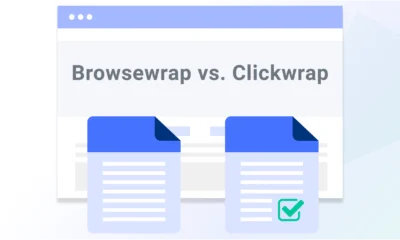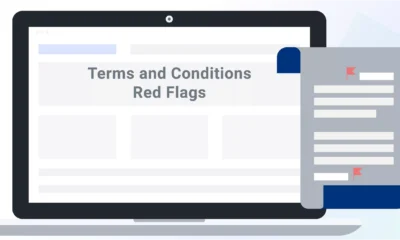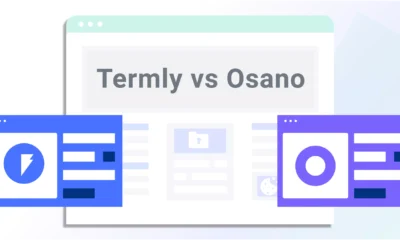An end-user license agreement (EULA) is a legal agreement granting a user a license to use an application or software. It must be consented to before a user buys, installs, or downloads an application or software owned by the service provider.
As a software owner, having a EULA is vital to protect your ownership rights and notify users of their obligations.
Our EULA guide breaks down everything you need to know about End-user License Agreements (EULAs) and how to create a comprehensive one.
What Is a EULA?
A EULA is a legally binding contract between you (the software provider) and the end-user (the software buyer). This contract grants a license allowing end-users to use your software or application.
The EULA includes how the buyer can or cannot use the software or product, what obligations the buyer must meet, and what rights the seller retains.
First, let’s go over the parties involved in an end-user license agreement:
- Software provider or creator
- Buyer or end-user
Software Provider
You are the software provider if you create or own the software. You own the rights to the software in question and sell it to a target market. You may also be called the publisher or developer.
Another more common name is a licensor because you hold the product’s license and allow individuals to use it.
Software buyer
The software buyers are your end users — the individuals or companies who purchase your software. There are many end users in most cases because products are usually marketed to a large target audience.
They can also be called licensees because they buy the license to use your product.
Purpose of EULA
The agreement’s purpose is to protect the rights — including copyright — of software creators and inventors, not the consumers.
Generally, the clauses of a EULA include ways that the buyer:
- Can use the software
- Cannot use the software
A EULA confers the right to use the software to the purchaser, however the purchaser does not own the software and thus has no legal ownership rights. All they have is the right, or a license, to use your product. Nor can the user sell or transfer the software to a third party.
Think of it like a rental. A tenant does not own the house, nor can they sell it to someone else. However, they have the right (a license) to live in it. Legal ownership remains with the landlord.
The same is true with a EULA. The purchaser has the license to use the software, but the ownership rights stay with you.
Other Names for a EULA
End-user license agreements go by several different names, including:
- License agreement
- Licensed application end-user agreement
- Shrink-wrap license
- Software license agreement
- User agreement
Is a EULA Required by Law?
There is no legal requirement to provide a EULA to your users. However, you and your business may face legal hurdles if you do not provide such an agreement.
The EULA protects the ownership of your software or app, specifying that the end-users only obtain a license to use your product, not any ownership rights. It also provides disclaimers and limits your liability to any injury or damage that may occur when the consumer uses your product.
Does a EULA Provide Legal Protection?
A EULA is a legally enforceable contract between you and the end user and can protect your intellectual property and copyright.
Under the laws of any jurisdiction, a contract is only binding when both parties give their mutual consent to the contract’s terms. Thus, a EULA is binding as long as the user gives their consent to the agreement and the language of the EULA is coherent enough that said user could be expected to understand they are entering into a contract with you.
A EULA’s clauses govern the relationship between you and the end user. The primary legal protections of a EULA provide you with the following:
- Reaffirms your ownership rights
- Explains rights conferred in license to user
- Restricts the use of the license
- Disclaims warranties
- Limits liabilities
- Describes license termination
A EULA may provide some protection from a possible lawsuit brought by an end user who claims your software damaged or harmed them or their company in some way.
When Do You Need a EULA?
If an issue arises, a EULA sets out the guidelines of ownership rights and licensee rights; it also includes the dos and don’ts of the licensee.
You need a EULA when you want to achieve the following:
Limit Infringement
The software or application is your invention. The user only has a license to use it.
A EULA will forbid the user from replicating your product, reverse engineering it, distributing it to third parties, or using it for illegal purposes.
Limit Liabilities
This clause will limit any liability an end-user can recover as damages incurred due to using your app or software. This limitation is particularly important with new products because some bugs or errors in manufacturing or design may not be evident until the product gets used.
Provide Control
You set the terms of the license. For example, you may only offer your product for personal or commercial use. Or, you may have location restrictions, such as the software only working in North America.
Additionally, the power to control how you give your license includes the power to revoke the license. As we will discuss later in this guide, EULAs often have a clause that allows you to terminate the license if you find that the user violated the EULA and infringed on your copyright.
What Is Usually in a EULA?
Different software providers will prioritize various clauses to put in their EULA based on their needs. However, there are some standard EULA clauses that all software providers need to include, such as:
Basic Clauses
There is some basic information that every EULA should have, including:
- Licensor information: Software provider/creator name and address
- Software: Name of the software and its purpose
- Date: When the EULA becomes enforceable and the licensee bound by its terms
You should explain immediately to the prospective buyer that by assenting to the terms of the EULA, they agree to be bound by the EULA, which is a legally binding contract.
Restrictions for Use
State what the user can use the software or application for and limit the actions a user can take with your software. This section should state that the user cannot do any of the following:
- Use the software in a way unintended by the licensor
- Reverse engineer the software
- Copy or reproduce the software
- Use the software for illegal purposes
- Sell or distribute the software to third parties
Grant of License
Clearly state that you only offer a license to use your product, not a right of ownership. Make it understood that you are granting the buyer permission to use your software — not own it. This permission is a license, not a transfer of ownership. Therefore, you retain all ownership rights to your software.
Copyright Infringement
As previously mentioned, you retain all ownership rights to your software. Thus, your copyright and any intellectual property rights will remain with you.
This clause is an extra layer of protection, explaining to users what happens if they infringe on your ownership rights. So, firmly and clearly state that if the user infringes on your copyright of the software, then you will hold the user legally liable.
Warranty Disclaimer
You should disclaim all warranties, which can be a simple statement that the software is being offered as is. Do not make any promises regarding the functionality or outcome of the services of your product. That way, if the product does not perform as advertised, you cannot be held liable for any damages incurred by the user.
Limitations on Liability
Limitations of liability is one of your EULA’s most important clauses. You want to clarify that you are not to be held liable for any damages resulting from your software.
Be clear, conscise, and limit your liability from harm that may befall the user. For example, if your software is incompatible with a certain kind of device and your company is unaware of it.
Examples of damages you would want to limit liability for include:
- Personal injuries
- Malfunction of software
- Property damages
- Loss of business reputation
Related Agreements
You can also include a section that states your users consent to other agreements that your company has. These agreements can include a terms and conditions or a privacy policy.
Governing Law
If a dispute arises between you and the end user over the license status, things can get confusing from a legal standpoint.
Does state law apply? Federal law? Or maybe you want arbitration, but the end user wants to go to court.
Who decides?
The easiest way to prevent this chaos and expensive legal mess is to be prepared. If a dispute arises between you and an end user (or multiple end users), knowing what law will govern the dispute is always beneficial.
In this clause, you’ll want to list the governing law of the EULA — i.e.., federal law, state law, or arbitration.
You might want to pick the state where you are incorporated or do the most business. Or maybe you can take this as an opportunity to choose a jurisdiction that is the most protective of intellectual property and copyrights.
Either way, having a governing clause in the EULA will ensure no surprises because the end users consent to the jurisdiction when they assent to the EULA.
Termination of Licensing
This clause reserves the right of the software provider to terminate the license. For example, a user employing the software for a use prohibited in the “restrictions of use” section can give rise to grounds for termination of the license.
Software Updates
A software or app creator can choose to provide updates. If so, you can include a clause informing the user that the software will update automatically to optimize programming or fix any bugs/glitches.
Licensor Contact Information
Lastly, you should provide a section where you list your contact information because a prospective end user might have questions about the terms of the EULA.
Add a section to the end of your EULA that includes the following:
- Customer service/legal department that can answer EULA inquires
- Mailing address
- Email address
- Telephone number
Where To Display a EULA
You want your users to agree to your EULA before they purchase the software or app and begin using it.
There are two main points at which you can display your EULA:
- Before the software or app is downloaded or installed
- After the download or installation is completed
Either option is acceptable, but you need to make sure your EULA is easy to find and conspicuous, both when the end-user first consents to it and later if they need to review it.
Never make your EULA optional. If consent to the EULA was optional, a user could argue that they did not agree to the terms and, therefore, the contract would be unenforceable.
Ensure the language is clear and precise — avoid legalese — so the user understands they must consent to the EULA terms to hold the software’s license.
How To Create a EULA
There are different ways to create an end-user license agreement:
- Using a generator
- Using a template
- Writing your own
Termly can help you create the right EULA for your business.
Use a Generator
One way to create a EULA is to use a generator, like our EULA generator.
You’ll only need to fill in some basic information about your app or software and any rules and restrictions the user would have to abide by.
The EULA will then be generated based on the information you provided and can be published on your website or application.
Use a Template
Another way to create a EULA is to follow a template. We offer a free EULA template where you can fill in the blanks with your business and software information.
Write Your Own
Lastly, you can write your own EULA tailored to your specific needs. This option, however, is only recommended if you are comfortable with the necessary steps to create an effective EULA.
The main areas of your EULA should include:
- Basic information (licensor and software information and contact information)
- License grant
- Restrictions on use
- Limits on liability
- Disclaimer of warranty
- Termination clause
- Jurisdictional clause (governing law of EULA)
If you choose to go this route, we have a helpful guide on how to write a EULA.
A EULA will allow you to confidently market your software or application to end users. Its purpose is to protect your ownership rights, establish end-user obligations, and limit your legal liability. It is an irreplaceable agreement you need for your business.
With Termly, you can navigate the legal jargon and build your own EULA with all the safeguards you need to protect your ownership rights and guard against possible disputes.

